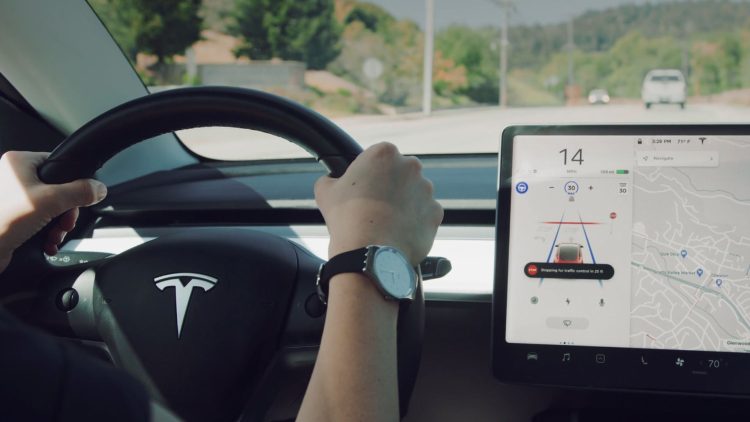Tesla FSD service Full Self-Driving (Full Self-Driving) has been a hot topic for years. Promising a glimpse into the future of autonomous driving, it came with a hefty price tag.
But in a recent move that surprised many, Tesla slammed on the brakes – on subscription costs, that is.
The company slashed the monthly fee for FSD by a significant 50%. Is it a strategic shift or a reflection of Tesla’s current financial state?
Tesla FSD service has been discounted with a rebranding
This price cut coincides with a subtle shift in how Tesla positions FSD. The company is now emphasizing the “Supervised” aspect of the software, highlighting that drivers remain responsible and must be actively engaged while using the system. This rebranding comes amidst criticism that Tesla FSD lacked essential safeguards against driver overreliance. Previously, Tesla offered FSD as a $199 monthly subscription or a one-time purchase of $12,000.
Additionally, owners with the less-advanced Autopilot system could access a separate $99 monthly Tesla FSD subscription.
The Tesla FSD price change has been announced by Tesla’s official account on X with the following words:
You can now subscribe to FSD (Supervised) for $99/month in the UShttps://t.co/0IwC9GC0aF
Upgrades > Software Upgrades > Subscribe
— Tesla (@Tesla) April 12, 2024
However, with Autopilot now standard on all new Teslas, this price distinction is no longer relevant.
Free Trials and mandatory demos
In a bid to attract more users to FSD, Tesla recently launched a one-month free trial. Unconfirmed reports also suggest that service centers have been instructed to offer mandatory FSD demo rides to all potential buyers, seemingly driven by a push from CEO Elon Musk.
While some Tesla owners sing the praises of FSD’s capabilities, others find it to be erratic and unreliable. The company is constantly refining the system through software updates, with the latest version (v12) supposedly utilizing “end-to-end neural nets” – a technology championed by Musk.
Unlike most automakers whose driver-assist systems are limited to highways, Tesla takes a bolder approach. They actively encourage FSD use on local roads, navigating traffic signals, intersections, and potentially vulnerable road users like pedestrians. FSD manages acceleration, braking, and lane changes (including the tricky left turns), and recognizes traffic signals and signs. However, driver attentiveness and the ability to take immediate control remain paramount.
Are financial pressures fueling the price cut? Or a Xiaomi shadow?
Tesla’s financial situation might be a key factor driving the Tesla FSD price reduction. The company’s quarterly deliveries have seen a decline for the first time in years. This could be prompting a focus on software services as an alternative revenue stream to compensate for declining vehicle sales.
However, there might be another force at play. The recent, highly successful launch of Xiaomi’s SU7 electric vehicle, boasting advanced driver-assistance features, could be a factor in Tesla’s decision. With a new competitor entering the electric car market with potentially disruptive technology, Tesla might be feeling the heat.

The price cut for FSD could be a strategic move to maintain market share and position themselves as the leader in autonomous driving technology.
Furthermore, recent reports claimed that Tesla halted the development of the affordable electric vehicle known as the “Model 2,” originally priced around $25,000. While Musk refuted these reports, he shortly after announced the unveiling of a “robotaxi” later in 2024, likely powered by FSD technology.
Is Tesla’s FSD price cut a strategic move to entice more users, bolster software revenue, and counter a new competitor in Xiaomi, or a sign of financial strain?
Only time will tell.
Featured image credit: Tesla





